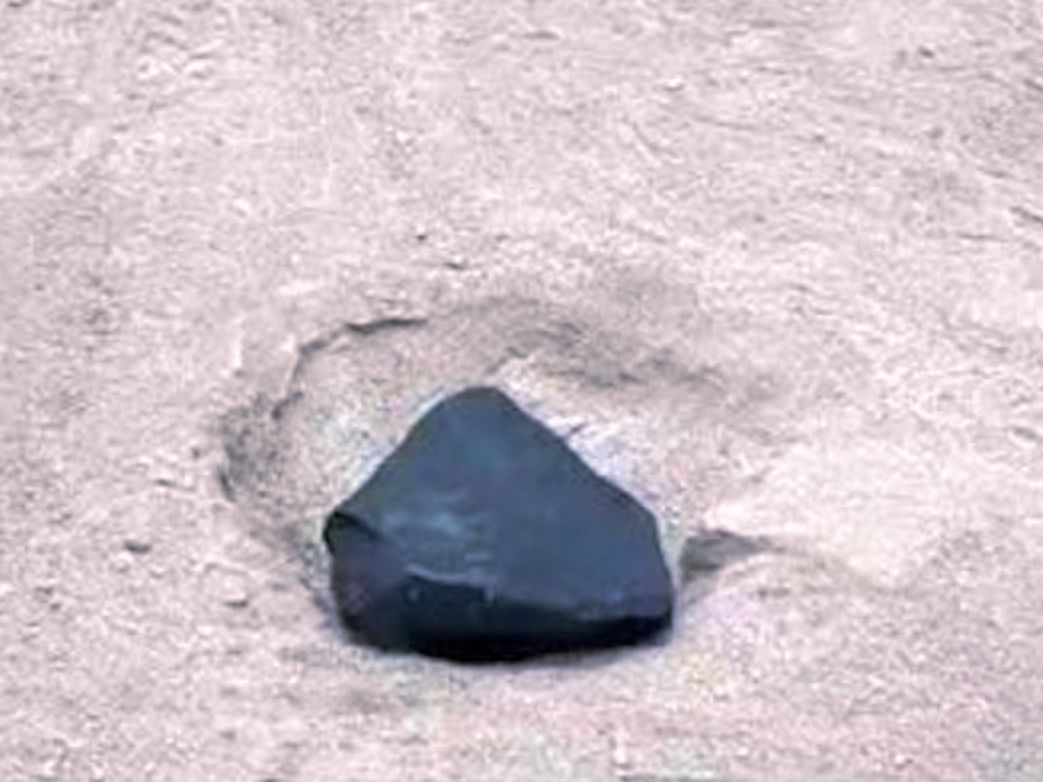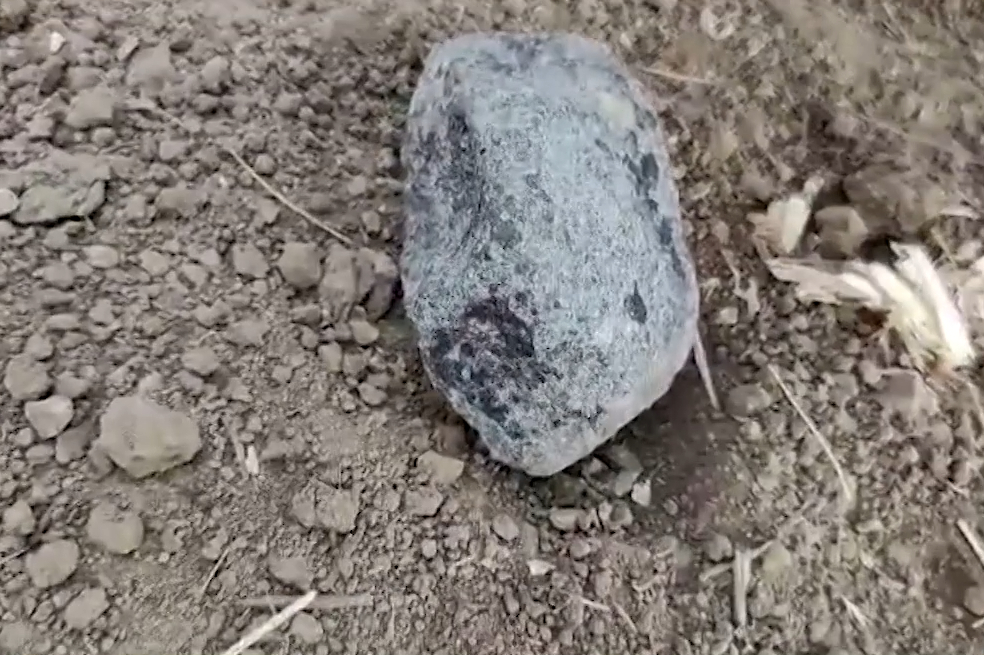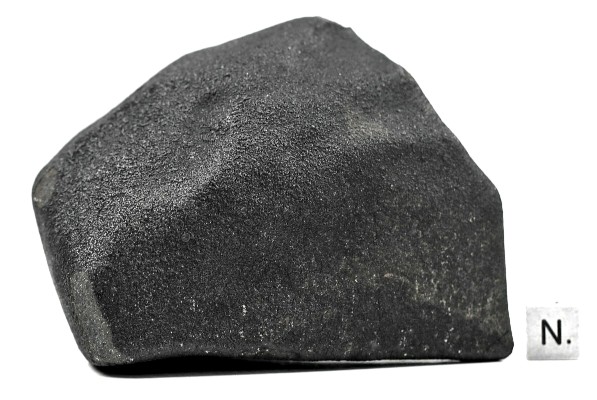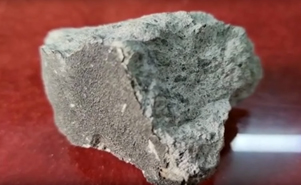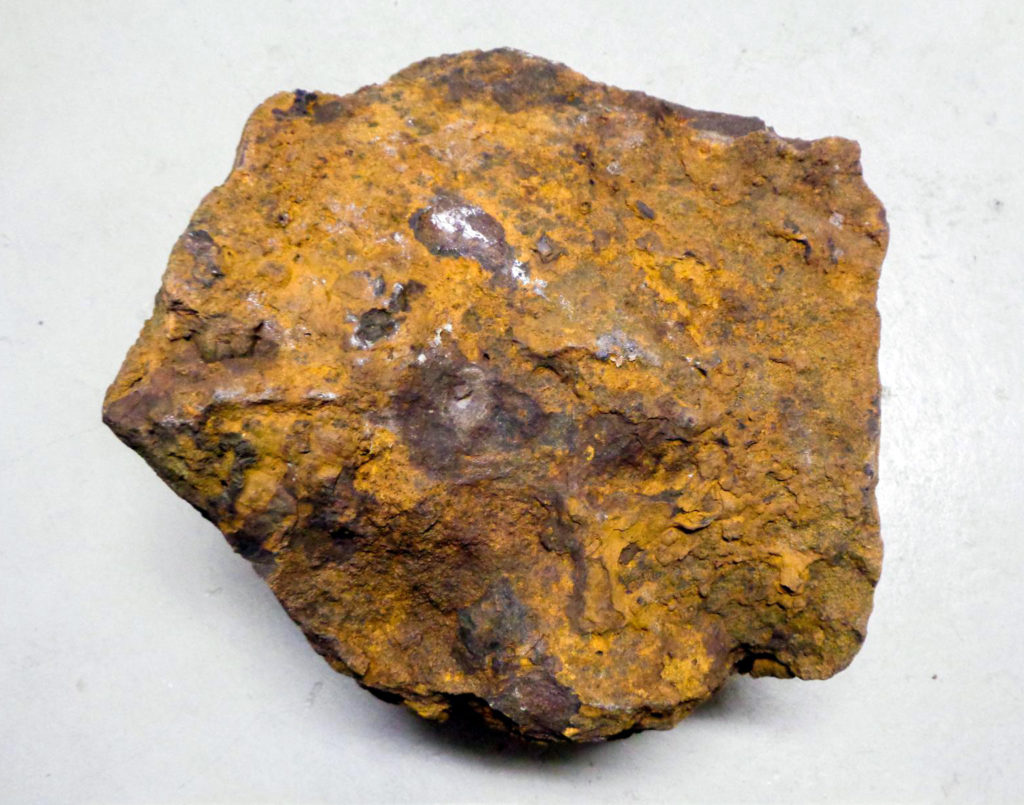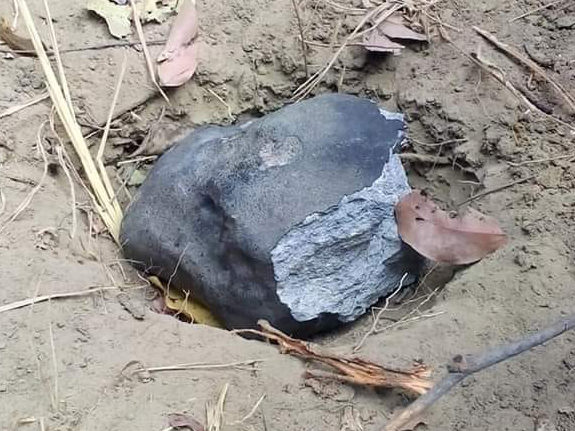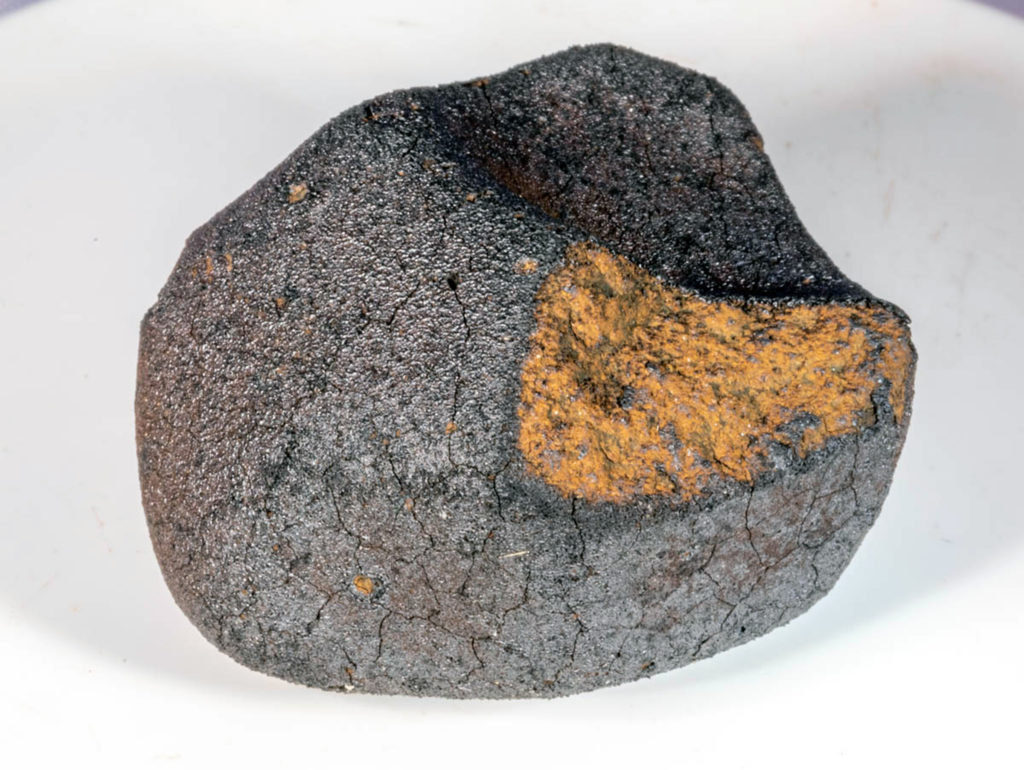Physicochemical Controls on the Compositions of the Earth and PlanetsOPEN ACCESS
Paolo A. Sossi, Remco C. Hin, Thorsten Kleine, Alessandro Morbidelli & Francis Nimmo Space Science Reviews, Volume 221, article number 118, Published: 25 November 2025 LINK (OPEN ACCESS)PDF (OPEN ACCESS) “Despite the fact that the…
The Moon-forming impactor Theia originated from the inner Solar System
Timo Hopp, Nicolas Dauphas, Maud Boyet, Seth A. Jacobson, and Thorsten Kleine Science, Vol 390, Issue 6775, pp. 819-823 (20 November 2025) LINK “The Moon formed from a giant impact of a planetary body, called…
Potassium-40 isotopic evidence for an extant pre-giant-impact component of Earth’s mantle
Da Wang, Nicole X. Nie, Bradley J. Peters, James M. D. Day, Steven B. Shirey & Richard W. Carlson Nature Geoscience, Published: 14 October 2025 LINK “Earth’s bulk composition has elemental and isotopic characteristics that…
The depletion of the asteroid belt and the impact history of the Earth
Julio A. Fernández Icarus, In Press, Journal Pre-proof, Available online 23 September 2025 LINK “Highlights “We have evaluated the rate at which the asteroid belt is losing material, and how it splits between macroscopic bodies…
Using carbon isotopes to trace the origin of volatiles on Earth and Mars
Damanveer S. Grewal, Sujoy Mukhopadhay Geochimica et Cosmochimica ActaAvailable online 12 September 2025 LINK “The distinct accretionary histories of Earth and Mars – with Earth experiencing protracted growth and small contributions from outer solar system…
Exploring impact vapor plume reactions from asteroidal impacts: Monte Carlo simulations and implications for biomolecules synthesisOPEN ACCESS
Yoko Ochiai, Shigeru Ida , Daigo Shoji IcarusAvailable online 29 July 2025, 116736 LINK + PDF (OPEN ACCESS) “Highlights “During a hypervelocity impact, both the impactor and target materials evaporate, generating an impact vapor plume…
Traces of the oxygen isotope composition of ancient air in fossilized cosmic dustOPEN ACCESS
Fabian Zahnow, Martin D. Suttle, Marina Lazarov, Stefan Weyer, Tommaso Di Rocco, Luigi Folco & Andreas Pack Communications Earth & Environment, Volume 6, Article number: 577 LINK (OPEN ACCESS)PDF (OPEN ACCESS) “As a sub-type of…
Dynamical origin of Theia, the last giant impactor on EarthOPEN ACCESS
Duarte Branco, Sean N. Raymond, Pedro Machado Preprint submitted to Elsevier, 2 July 2025 PDF (OPEN ACCESS) Update (11 July 2025): Icarus, available online 11 July 2025 LINK + PDF (OPEN ACCESS) “Cosmochemical studies have…
Was Earth’s Water Acquired Locally during the Earliest Phases of the Solar System Formation?OPEN ACCESS
Lise Boitard-Crépeau, Cecilia Ceccarelli, Pierre Beck, Lionel Vacher, and Piero Ugliengo The Astrophysical Journal Letters, Volume 987, Number 2, Published 2025 July 2 LINK (OPEN ACCESS)PDF (OPEN ACCESS) “The origin of the terrestrial water remains…
The shaping of terrestrial planets by late accretions
Simone Marchi & Jun Korenaga NatureReview, Volume 641, pages 1111–1120, Published: 28 May 2025 LINK “Terrestrial planets—Mercury, Venus, Earth and Mars—formed by the accretion of smaller objects. The Earth was probably the latest terrestrial planet…
Origin of moderately volatile elements in Earth inferred from mass-dependent Ge isotope variations among chondritesOPEN ACCESS
Elias Wölfer, Christoph Burkhardt, Francis Nimmo, Thorsten Kleine Accepted for publication in Earth and Planetary Science Letters PDF (OPEN ACCESS) “The bulk silicate Earth (BSE) is depleted in moderately volatile elements, indicating Earth formed from…
Differentiated planetesimals record differing sources of sulfur in inner and outer solar system materials
Elizabeth A. Heiny, Edward M. Stolper, and John M. Eiler PNAS, May 2, 2025, 122 (18) e2418198122 LINK “The isotope anomalies of noncarbonaceous (NC) and carbonaceous (CC) extraterrestrial materials provide a framework for tracing the…
The source of hydrogen in earth’s building blocksOPEN ACCESS
Thomas J. Barrett, James F.J. Bryson, Kalotina Geraki IcarusAvailable online 3 April 2025, 116588 LINK + PDF (OPEN ACCESS) “Highlights “Despite being pivotal to the habitability of our planet, the process by which Earth gained…
Porphyritic olivine chondrules with enstatite chondrite isotopic composition as a main building block of Earth
Yves Marrocchi, Tahar Hammouda, Maud Boyet, Guillaume Avice, Alessandro Morbidelli Earth and Planetary Science LettersVolume 659, 1 June 2025, 119337Available online 30 March 2025, Version of Record 30 March 2025 LINK “Highlights “The nature and…
Stress analysis of asteroids during atmospheric entry and implications for the breakup criterion
Théo A. Rulko, Aaditya Rau, Grégoire Chomette, Lorien Wheeler, Donovan Mathias , Jessie Dotson, Raúl Radovitzky Icarus, In Press, Journal Pre-proof, Available online 7 March 2025 LINK “Highlights “Observations of asteroid fragmentation upon atmospheric entry…
Implications of Differentiated Late Accretion for the Volatile Inventory of the Bulk Silicate EarthOPEN ACCESS
Damanveer S. Grewal and Varun Manilal The Planetary Science Journal, Volume 6, Number 1 LINK (OPEN ACCESS)PDF (OPEN ACCESS) “Earth is believed to have acquired its highly siderophile element (HSE) inventory through the late accretion…
Oxygen isotope identity of the Earth and Moon with implications for the formation of the Moon and source of volatilesOPEN ACCESS
Meike Fischer, Stefan T. M. Peters, Daniel Herwartz, Paul Hartogh, Tommaso Di Rocco, and Andreas Pack PNASDecember 16, 2024121 (52) e2321070121 LINK (OPEN ACCESS)PDF (OPEN ACCESS) “The Moon formed 4.5 Ga ago through a collision…
Tracing the origin of volatiles on Earth using nitrogen isotope ratios in iron meteorites
Damanveer S. Grewal, Surjyendu Bhattacharjee, Gabriel-Darius Mardaru, Paul D. Asimow Geochimica et Cosmochimica ActaIn Press, Journal Pre-proof, Available online 15 November 2024 LINK “Understanding the relationships between the nitrogen (N) isotope ratios of early solar…
Mechanisms and timing of carbonaceous chondrite delivery to the EarthOPEN ACCESS
Francis Nimmo, Thorsten Kleine, Alessandro Morbidelli, David Nesvorny Accepted for publication in Earth and Planetary Science Letters, 7 November 2024 PDF (OPEN ACCESS) “The nucleosynthetic isotope signatures of meteorites and the bulk silicate Earth (BSE)…
Condensation and the Volatility Trend of the EarthOPEN ACCESS
Katharina Lodders, Bruce Fegley, Klaus Mezger, Denton Ebel Update (17 June 2025): Space Science Reviews, Volume 221, article number 54, Published: 17 June 2025 LINK (OPEN ACCESS)PDF (OPEN ACCESS) Preprint submitted to Space Science Reviews,…
The non-carbonaceous nature of Earth’s late-stage accretionOPEN ACCESS
K.R. Bermingham, H.A. Tornabene, R.J. Walker, L.V. Godfrey, B.S. Meyer, P. Piccoli, S.J. Mojzsis Geochimica et Cosmochimica ActaIn Press, Journal Pre-proof, Available online 5 November 2024 LINK + PDF (OPEN ACCESS) “Constraining the origin of…
Effect of a giant meteorite impact on Paleoarchean surface environments and lifeOPEN ACCESS
Nadja Drabon, Andrew H. Knoll, Donald R. Lowe and David A. Mucciarone PNAS, October 21, 2024, 121 (44) e2408721121 LINK (OPEN ACCESS)PDF (OPEN ACCESS) “Large meteorite impacts must have strongly affected the habitability of the…
Ruthenium isotopes show the Chicxulub impactor was a carbonaceous-type asteroid
Mario Fischer-Gödde, Jonas Tusch, Steven Goderis, Alessandro Bragagni, Tanja Mohr-Westheide, Nils Messling, Bo-Magnus Elfers, Birger Schmitz, Wolf U. Reimold, Wolfgang D. Maier, Philippe Claeys, Christian Koeberl, François L. H. Tissot, Martin Bizzarro, and Carsten Münker…
The astrochemical evolutionary traits of phospholipid membrane homochirality
Jana Bocková, Nykola C. Jones, Søren V. Hoffmann & Cornelia Meinert Nature Reviews Chemistry, Review Article, Published: 18 July 2024 LINK “Compartmentalization is crucial for the evolution of life. Present-day phospholipid membranes exhibit a high…
Identification of Earth’s late accretion by large impactors through mass independent Cr isotopes
Yogita Kadlag, Aryavart Anand, Mario Fischer-Gödde, Klaus Mezger , Kristoffer Szilas , Steven Goderis, Ingo Leya IcarusAvailable online 31 May 2024, 116143 LINK “Highlights “The late addition of extra-terrestrial material may represent an important source…
Abiotic formation of alkylsulfonic acids in interstellar analog ices and implications for their detection on RyuguOPEN ACCESS
Mason McAnally, Jana Bocková, Ashanie Herath, Andrew M. Turner, Cornelia Meinert & Ralf I. Kaiser Nature Communications, Volume 15, Article number: 4409, Published: 23 May 2024 LINK (OPEN ACCESS)PDF (OPEN ACCESS) “For the last century,…
The Earth atmosphere-like bulk nitrogen isotope composition obtained by stepwise combustion analyses of Ryugu return samplesOPEN ACCESS
Ko Hashizume, Akizumi Ishida, Ayano Chiba, Ryuji Okazaki, Kasumi Yogata, Toru Yada, Fumio Kitajima, Hisayoshi Yurimoto, Tomoki Nakamura, Takaaki Noguchi, Hikaru Yabuta, Hiroshi Naraoka, Yoshinori Takano, Kanako Sakamoto, Shogo Tachibana, Masahiro Nishimura, Aiko Nakato, Akiko…
Life on Earth can grow on extraterrestrial organic carbonOPEN ACCESS
Annemiek C. Waajen, Cassio Lima, Royston Goodacre & Charles S. Cockell Scientific Reports, Volume 14, Article number: 3691 LINK (OPEN ACCESS)PDF (OPEN ACCESS) “The universe is a vast store of organic abiotic carbon that could…
Moon-forming impactor as a source of Earth’s basal mantle anomalies
Qian Yuan, Mingming Li, Steven J. Desch, Byeongkwan Ko, Hongping Deng, Edward J. Garnero, Travis S. J. Gabriel, Jacob A. Kegerreis, Yoshinori Miyazaki, Vincent Eke & Paul D. Asimow Nature, Volume 623, pages 95–99Published: 01…
Fossil and present-day stromatolite ooids contain a meteoritic polymer of glycine and ironOPEN ACCESS
Julie E M McGeoch, Anton J Frommelt, Robin L Owen, David Lageson, Malcolm W McGeoch PDF (OPEN ACCESS) “Hemoglycin, a space polymer of glycine and iron, has been identified in the carbonaceous chondritic meteorites Allende,…
Bayesian Inference on the Isotopic Building Blocks of Mars and EarthOPEN ACCESS
Nicolas Dauphas, Timo Hopp, David Nesvorny Submitted to Icarus June 30, 2023, Accepted September 16, 2023 PDF (OPEN ACCESS) “Isotopic anomalies provide a means of probing the materials responsible for the formation of terrestrial planets….
Volatile-depletion processing of the building blocks of Earth and Mars as recorded by potassium isotopes
Yan Hu, Frédéric Moynier, Xin Yang Earth and Planetary Science LettersVolume 620, 15 October 2023, 118319 LINK “The stable potassium isotopic ratios (41K/39K) of Earth and Mars have been interpreted to reflect either nucleosynthetic isotope…
I/Pu reveals Earth mainly accreted from volatile-poor differentiated planetesimalsOPEN ACCESS
Weiyi Liu, Yigang Zhang, François. L. H. Tissot, Guillaume Avice, Zhilin Ye, and Qing-Zhu Yin Science Advances5 Jul 2023Vol 9, Issue 27 LINK (OPEN ACCESS)PDF (OPEN ACCESS) “The observation that mid-ocean ridge basalts had ~3×…
Trace element redistributions during metamorphism of E-chondrites: implications for reduced bodies and the Earth
Jean-Alix Barrat, Addi Bischoff, Brigitte Zanda Geochimica et Cosmochimica ActaIn Press, Journal Pre-proof, Available online 5 July 2023 LINK “We report on new trace element analyses of enstatite chondrites (ECs) to clarify their behavior during…
Mass-dependent nickel isotopic variations in achondrites and lunar rocks
Shui-Jiong Wang, Shi-Jie Li, Yangting Lin, Si-Zhang Sheng Geochimica et Cosmochimica ActaIn Press, Journal Pre-proof, Available online 11 April 2023 LINK “We present high-precision mass-dependent nickel isotopic data for a comprehensive suite of achondrites and…
Elemental sulfur, hydrogen sulfide, and carbon monoxide-driven dimerization of glycine at sub-millimolar concentrations: Implications for the origin of lifeOPEN ACCESS
Norio Kitadai, Shigeru Shimamura, Wataru Takahagi, Masayuki Miyazaki, Eiji Tasumi, Satoshi Okada Geochimica et Cosmochimica ActaAvailable online 3 April 2023 LINK (OPEN ACCESS) “The life’s origin in submarine hydrothermal systems is a long-standing scenario supported…
Evaluating the abiotic synthesis potential and the stability of building blocks of life beneath an impact-induced steam atmosphereOPEN ACCESS
Zongbin Zhang, Haofan Jiang, Pengcheng Ju, Lu Pan, Joti Rouillard, Gentao Zhou, Fang Huang and Jihua Hao Frontiers in Microbiology, Volume 14 – 2023, 03 April 2023 LINK (OPEN ACCESS) “A prerequisite for prebioticIf applicable,…
Degassing of early-formed planetesimals restricted water delivery to Earth
M. E. Newcombe, S. G. Nielsen, L. D. Peterson, J. Wang, C. M. O’D. Alexander, A. R. Sarafian, K. Shimizu, L. R. Nittler & A. J. Irving NaturePublished: 15 March 2023 LINK “The timing of…
Early water delivery to terrestrial planet regions during the stages of Jupiter’s formation and migration in the Grand Tack modelOPEN ACCESS
Masahiro Ogihara, Hidenori Genda, Yasuhito Sekine accepted for publication in PSJ PDF (OPEN ACCESS)6-minute video summary Update (13 February 2023): The Planetary Science Journal, Volume 4, Number 2LINK (OPEN ACCESS)PDF (OPEN ACCESS) “The formation and…
Nucleosynthetic isotope anomalies of zinc in meteorites constrain the origin of Earth’s volatiles
Rayssa Martins, Sven Kuthning, Barry J. Coles, Katharina Kreissig, and Mark Rehkämper Science26 Jan 2023Vol 379, Issue 6630pp. 369-372 LINK “Material inherited from different nucleosynthesis sources imparts distinct isotopic signatures to meteorites and terrestrial planets….
Meteorites have inherited nucleosynthetic anomalies of potassium-40 produced in supernovae
Nicole X. Nie, Da Wang, Zachary A. Torrano, Richard W. Carlson, Conel M. O’D. Alexander, and Anat Shahar Science26 Jan 2023Vol 379, Issue 6630pp. 372-376 LINK “Meteorites record processes that occurred before and during the…
Contribution of Ryugu-like material to Earth’s volatile inventory by Cu and Zn isotopic analysis
Marine Paquet, Frederic Moynier, Tetsuya Yokoyama, Wei Dai, Yan Hu, Yoshinari Abe, Jérôme Aléon, Conel M. O’D. Alexander, Sachiko Amari, Yuri Amelin, Ken-ichi Bajo, Martin Bizzarro, Audrey Bouvier, Richard W. Carlson, Marc Chaussidon, Byeon-Gak Choi,…
The accretion of planet Earth
Alex N. Halliday & Robin M. Canup Nature Reviews Earth & EnvironmentReview Article, Published: 29 November 2022 LINK “Earth’s origins are challenging to elucidate, given the lack of surviving terrestrial geology from the first 500 Myr…
Xenon in the Protoplanetary Disk (PPD), in Two Planets, and a CometOPEN ACCESS
Kurt Marti and K. J. Mathew The Astrophysical Journal, Volume 940, Number 1Published: 16 November 2022 LINK (OPEN ACCESS)PDF (OPEN ACCESS) “Isotopic anomalies in several elements, as recently observed in meteorites, are generally interpreted to…
The effect of collisional erosion on the composition of Earth-analog planets in Grand Tack models: Implications for the formation of the Earth
L. Allibert, J. Siebert, S. Charnoz, S.A. Jacobson, S.N. Raymond IcarusIn Press, Journal Pre-proof, Available online 14 November 2022 LINK “Impact-induced erosion of the Earth’s early crust during accretion of terrestrial bodies can significantly modify…
Hydrogen Drives Part of the Reverse Krebs Cycle under Metal or Meteorite CatalysisOPEN ACCESS
Sophia A. Rauscher, Joseph Moran Angewandte Chemie International EditionFirst published: 17 October 2022 LINK (OPEN ACCESS)PDF (OPEN ACCESS) “Hydrogen (H2) is a geological source of reducing electrons that is thought to have powered the metabolism…
Limited nitrogen isotopic fractionation during core-mantle differentiation in rocky protoplanets and planets
Damanveer S. Grewal, Tao Sun, Sanath Aithala, Taylor Hough, Rajdeep Dasgupta, Laurence Y. Yeung, Edwin Schauble Geochimica et Cosmochimica ActaAvailable online 19 October 2022 LINK “15N/14N ratios of meteorites are a powerful tool for tracing…
Results of an Eight-Year Extraction of Phosphorus Minerals within the Seymchan MeteoriteOPEN ACCESS
Maheen Gull, Tian Feng and Matthew A. Pasek Life 2022, 12(10), 1591Published: 12 October 2022 LINK (OPEN ACCESS)PDF (DOWNLOAD) “In-fall of extraterrestrial material including meteorites and interstellar dust particles during the late heavy bombardment are…
Water-rich C-type asteroids as early solar system carbonate factories
Victoria Froh, Maitrayee Bose, Martin D. Suttle, Jacopo Nava, Luigi Folco, Lynda B. Williams, Julie Castillo-Rogez IcarusIn Press, Journal Pre-proof, Available online 12 October 2022 LINK “Highlights • We investigated a large, fine-grained micrometeorite TAM19B-7…
Nd isotope variation between the Earth–Moon system and enstatite chondrites
Shelby Johnston, Alan Brandon, Claire McLeod, Kai Rankenburg, Harry Becker & Peter Copeland NaturePublished: 06 October 2022 LINK (OPEN ACCESS) “Reconstructing the building blocks that made Earth and the Moon is critical to constrain their…
The cadmium and zinc isotope compositions of the silicate Earth – implications for terrestrial volatile accretionOPEN ACCESS
Harvey Pickard, Emeliana Palk, Maria Schönbächler, Rebekah E.T. Moore, Barry J. Coles, Katharina Kreissig, Katrina Nilsson-Kerr, Samantha J. Hammond, Eiichi Takazawa, Christophe Hémond, Peter Tropper, Dan N. Barfod, Mark Rehkämper Geochimica et Cosmochimica ActaAvailable online…
Immediate Origin as a Post-impact SatelliteOPEN ACCESS
J. A. Kegerreis, S. Ruiz-Bonilla, V. R. Eke, R. J. Massey, T. D. Sandnes, and L. F. A. Teodoro The Astrophysical Journal Letters, Volume 937, Number 2 LINK (OPEN ACCESS)PDF (OPEN ACCESS) “The Moon is…
Earth’s composition was modified by collisional erosion
Paul Frossard, Claudine Israel, Audrey Bouvier, Maud Boyet Science29 Sep 2022Vol 377, Issue 6614pp. 1529-1532 LINK Supplementary Materials “The samarium-146 (146Sm)–neodymium-142 (142Nd) short-lived decay system (half-life of 103 million years) is a powerful tracer of…
Partitioning of Ru, Pd, Ag, Re, Pt, Ir and Au between sulfide-, metal- and silicate liquid at highly reduced conditions: implications for terrestrial accretion and aubrite parent body evolution
E.S. Steenstra, J. Berndt, A. Rohrbach, E.S Bullock, W. van Westrenen, S. Klemme, M.J. Walter Geochimica et Cosmochimica ActaIn Press, Journal Pre-proof, Available online 27 August 2022 LINK “The abundances of highly siderophile elements (HSE)…
Did transit through the galactic spiral arms seed crust production on the early Earth?OPEN ACCESS
C.L. Kirkland, P.J. Sutton, T. Erickson, T.E. Johnson, M.I.H. Hartnady, H. Smithies, M. Prause GeologyAugust 23, 2022 LINK (OPEN ACCESS) Supplemental Material “Although there is evidence for periodic geological perturbations driven by regular or semi-regular…
Solar System evolution and terrestrial planet accretion determined by Zr isotopic signatures of meteoritesOPEN ACCESS
Jan Render, Gregory A. Brennecka, Christoph Burkhardt, Thorsten Kleine Earth and Planetary Science LettersVolume 595, 1 October 2022, 117748 LINK (OPEN ACCESS) “Highlights • We present new Zr isotope data for a comprehensive suite of…
Widespread impact-generated porosity in early planetary crustsOPEN ACCESS
Sean E. Wiggins, Brandon C. Johnson, Gareth S. Collins, H. Jay Melosh & Simone Marchi Nature Communications, Volume 13, Article number: 4817Published: 16 August 2022 LINK (OPEN ACCESS)PDF (OPEN ACCESS) “NASA’s Gravity Recovery and Interior…
Nitrogen isotope evidence for Earth’s heterogeneous accretion of volatilesOPEN ACCESS
Lanlan Shi, Wenhua Lu, Takanori Kagoshima, Yuji Sano, Zenghao Gao, Zhixue Du, Yun Liu, Yingwei Fei & Yuan Li Nature Communications, Volume 13, Article number: 4769 LINK (OPEN ACCESS)PDF (OPEN ACCESS) “The origin of major…
Stochastic accretion of the Earth
Paolo A. Sossi, Ingo L. Stotz, Seth A. Jacobson, Alessandro Morbidelli & Hugh St. C. O’Neill Nature AstronomyPublished: 07 July 2022 LINK “Chondritic meteorites are thought to be representative of the material that formed the…
Nucleosynthetic zinc isotope anomalies reveal a dual origin of terrestrial volatilesOPEN ACCESS
Theodor Steller, Christoph Burkhardt, Chun Yang, Thorsten Kleine IcarusAvailable online 1 July 202 “Highlights • Nucleosynthetic isotope anomalies for volatile element zinc.• Same nucleosynthetic NC-CC dichotomy as for non-volatile elements.• Terrestrial zinc mixture of ~70%…
Zinc isotope anomalies in primitive meteorites identify the outer solar system as an important source of Earth’s volatile inventoryOPEN ACCESS
Paul S. Savage, Frédéric Moynier, Maud Boyet IcarusIn Press, Journal Pre-proof, Available online 1 July 2022 LINK (OPEN ACCESS) “Highlights • Chondrites exhibit a range of Zn isotopic anomalies compared to Earth.• Earth’s Zn inventory…
Fe5S2 identified as a host of sulfur in Earth and planetary cores
Claire C. Zurkowski, Barbara Lavina, Abigail Case, Kellie Swadba, Stella Chariton, Vitali Prakapenka, Andrew J. Campbell Earth and Planetary Science LettersVolume 593, 1 September 2022 LINK Highlights • The Fe-saturated Fe-S phase relationships were probed…
Early Solar System instability triggered by dispersal of the gaseous disk
Beibei Liu, Sean N. Raymond & Seth A. Jacobson Nature, Volume 604, pages 643–646Published: 27 April 2022 LINK “The Solar System’s orbital structure is thought to have been sculpted by an episode of dynamical instability…
Core segregation during pebble accretion
Peter Olson, Zachary Sharp, Susmita Garai Earth and Planetary Science LettersVolume 587, 1 June 2022, 117537 LINK “Highlights • Pebble accretion builds terrestrial protoplanets in a few million years.• Core segregation is synchronized to the…
Did Earth eat its leftovers? Impact ejecta as a component of the late veneerOPEN ACCESS
Philip J. Carter, Sarah T. Stewart Draft version April 11, 2022, to be published in PSJ PDF (OPEN ACCESS) Update (19 April 2022):LINK (OPEN ACCESS)PDF (OPEN ACCESS)The Planetary Science Journal, Volume 3, Number 4 “The…
Meteoritic noble gas constraints on the origin of terrestrial volatilesOPEN ACCESS
Bernard Marty ICARUSIn Press, Journal Pre-proof, Available online 3 April 2022 LINK (OPEN ACCESS) PDF (OPEN ACCESS) “Highlights • The composition of noble gases in primitive meteorites have the potential to yield stringent constraints on…
Half-life and initial Solar System abundance of 146Sm determined from the oldest andesitic meteoriteOPEN ACCESS
Linru Fang, Paul Frossard, Maud Boyet, Audrey Bouvier, Jean-Alix Barrat, Marc Chaussidon, and Frederic Moynier PNASMarch 15, 2022 | 119 (12) LINK (OPEN ACCESS)PDF (OPEN ACCESS) “The formation and differentiation of planetary bodies are dated…
The absence of an effect of nickel on iron isotope fractionation during core formation
E. Kubik, P.A. Sossi, J. Siebert, E. Inglis, M. Roskosz, E. Siciliano Rego, N. Wehr, F. Moynier Geochimica et Cosmochimica ActaIn Press, Journal Pre-proof, Available online 24 February 2022 LINK “The Fe isotopic compositions of…
The origin of volatile elements in the Earth–Moon systemOPEN ACCESS
Lars E. Borg, Gregory A. Brennecka, and Thomas S. Kruijer PNAS, February 22, 2022 LINK (OPEN ACCESS)PDF (OPEN ACCESS) “The origin of volatile species such as water in the Earth–Moon system is a subject of…
The Extent, Nature, and Origin of K and Rb Depletions and Isotopic Fractionations in Earth, the Moon, and Other Planetary BodiesOPEN ACCESS
Nicolas Dauphas, Nicole X. Nie, Marc Blanchard, Zhe J. Zhang, Hao Zeng, Justin Y. Hu, Merlin Meheut, Channon Visscher, Robin Canup and Timo Hopp The Planetary Science Journal, Volume 3, Number 2 LINK (OPEN ACCESS)PDF…
Large planets may not form fractionally large moonsOPEN ACCESS
Miki Nakajima, Hidenori Genda, Erik Asphaug & Shigeru Ida Nature Communications, Volume 13, Article number: 568 (2022)Published: 01 February 2022 LINK (OPEN ACCESS)PDF (OPEN ACCESS) “One of the unique aspects of Earth is that it…
Chemical Differentiation of Planets: A Core IssueOPEN ACCESS
Hervé Toulhoat, Viacheslav Zgonnik The Astrophysical Journal, Volume 924, Number 2Published: 14 January 2022 LINK (OPEN ACCESS)PDF (OPEN ACCESS) “By plotting empirical chemical element abundances on Earth relative to the Sun and normalized to silicon…
Towards RNA life on Early Earth: From atmospheric HCN to biomolecule production in warm little pondsOPEN ACCESS
Ben K. D. Pearce, Karan Molaverdikhani, Ralph E. Pudritz, Thomas Henning, Kaitlin E. Cerrillo Draft version , accepted to ApJ PDF (OPEN ACCESS) “The origin of life on Earth involves the early appearance of an…
Has the impact flux of small and large asteroids varied through time on Mars, the Earth and the Moon?OPEN ACCESS
Anthony Lagain, Mikhail Kreslavsky, David Baratoux, Yebo Liu, Hadrien Devillepoix, Philip Bland, Gretchen K. Benedix, Luc S. Doucet, Konstantinos Servis accepted in Earth and Planetary Science Letters, 28/12/2021 PDF (OPEN ACCESS) “The impact flux over…
Planetesimal rings as the cause of the Solar System’s planetary architectureOPEN ACCESS
Andre Izidoro, Rajdeep Dasgupta, Sean N. Raymond, Rogerio Deienno, Bertram Bitsch & Andrea Isella Nature Astronomy (2021)Published: 30 December 2021 LINK Update (3 January 2022): PDF (OPEN ACCESS) “Astronomical observations reveal that protoplanetary disks around…
Terrestrial planet formation from lost inner solar system materialOPEN ACCESS
Christoph Burkhardt, Fridolin Spitzer, Alessandro Morbidelli, Gerrit Budde, Jan H. Render, Thomas S. Kruijer and Thorsten Kleine Science Advances, 22 Dec 2021, Vol 7, Issue 52 LINK (OPEN ACCESS)PDF (OPEN ACCESS) “Two fundamentally different processes…
Meteorites and the RNA world: Synthesis of Nucleobases in Carbonaceous Planetesimals and the Role of Initial Volatile ContentOPEN ACCESS
Klaus Paschek, Dmitry A. Semenov, Ben K. D. Pearce, Kevin Lange, Thomas K. Henning, Ralph E. Pudritz Submitted to The Astrophysical Journal PDF (OPEN ACCESS) Update (10 January 2023): The Astrophysical Journal, Volume 942, Number…
An exploration of whether Earth can be built from chondritic components, not bulk chondrites
Conel M. O’D. Alexander Geochimica et Cosmochimica ActaAvailable online 17 December 2021 LINK “Here, two of a range of possible models are explored that assume that: (i) two of the main chondritic components (chondrules and…
Deep-mantle krypton reveals Earth’s early accretion of carbonaceous matter
Sandrine Péron, Sujoy Mukhopadhyay, Mark D. Kurz & David W. Graham Nature, Volume 600, pages 462–467 (2021)Published: 15 December 2021 LINK “Establishing when, and from where, carbon, nitrogen and water were delivered to Earth is…
Chromium Stable Isotope Panorama of Chondrites and Implications for Earth Early Accretion
Ke Zhu (朱柯), Frédéric Moynier, Conel M. O’D. Alexander, Jemma Davidson, Devin L. Schrader, Jian-Ming Zhu, Guang-Liang Wu, Martin Schiller, Martin Bizzarro, and Harry Becker The Astrophysical Journal, Volume 923, Number 1 LINK “We investigated…
Solar wind contributions to Earth’s oceans
Luke Daly, Martin R. Lee, Lydia J. Hallis, Hope A. Ishii, John P. Bradley, Phillip. A. Bland, David W. Saxey, Denis Fougerouse, William D. A. Rickard, Lucy V. Forman, Nicholas E. Timms, Fred Jourdan, Steven…
Habitability of the early Earth: liquid water under a faint young Sun facilitated by strong tidal heating due to a closer MoonOPEN ACCESS
René Heller, Jan-Peter Duda, Max Winkler, Joachim Reitner & Laurent Gizon PalZ (2021)Published: 24 November 2021 LINK (OPEN ACCESS)PDF (OPEN ACCESS) “Geological evidence suggests liquid water near the Earth’s surface as early as 4.4 gigayears…
Middle Ordovician astrochronology decouples asteroid breakup from glacially-induced biotic radiationsOPEN ACCESS
Jan Audun Rasmussen, Nicolas Thibault & Christian Mac Ørum Rasmussen Nature Communications, Volume 12, Article number: 6430 (2021) LINK (OPEN ACCESS)PDF (OPEN ACCESS) “Meso-Cenozoic evidence suggests links between changes in the expression of orbital changes…
Numerous chondritic impactors and oxidized magma ocean set Earth’s volatile depletionOPEN ACCESS
Haruka Sakuraba, Hiroyuki Kurokawa, Hidenori Genda & Kenji Ohta Scientific Reports, Volume 11, Article number: 20894 (2021) LINK (OPEN ACCESS)PDF (OPEN ACCESS) “Earth’s surface environment is largely influenced by its budget of major volatile elements:…
Delayed and variable late Archaean atmospheric oxidation due to high collision rates on Earth
S. Marchi, N. Drabon, T. Schulz, L. Schaefer, D. Nesvorny, W. F. Bottke, C. Koeberl & T. Lyons Nature GeosciencePublished: 21 October 2021 LINK “Frequent violent collisions of impactors from space punctuated the geological and…
Earth’s accretion inferred from iron isotopic anomalies of supernova nuclear statistical equilibrium originOPEN ACCESS
Timo Hopp, Nicolas Dauphas, Fridolin Spitzer, Christoph Burkhardt, Thorsten Kleine Accepted for publication in Earth and Planetary Science Letters PDF (OPEN ACCESS) Update (10 November 2021):Earth and Planetary Science LettersVolume 577, 1 January 2022LINK “Highlights…
Common feedstocks of late accretion for the terrestrial planets
M.-H. Zhu, A. Morbidelli, W. Neumann, Q.-Z. Yin, J.M.D. Day, D.C. Rubie, G.J. Archer, N. Artemieva, H. Becker, K. Wünnemann Nature Astronomy (30 September 2021) LINK “Abundances of the highly siderophile elements (HSEs) in silicate…
Tidal Evolution of the Earth–Moon System with a High Initial ObliquityOPEN ACCESS
The Planetary Science Journal, Volume 2, Number 4Published: 4 August 2021 LINK (OPEN ACCESS)PDF (OPEN ACCESS) “A giant-impact origin for the Moon is generally accepted, but many aspects of lunar formation remain poorly understood and…
Tellurium isotope cosmochemistry: Implications for volatile fractionation in chondrite parent bodies and origin of the late veneer
Jan L. Hellmann, Timo Hopp, Christoph Burkhardt, Harry Becker, Mario Fischer-Gödde, Thorsten Kleine Geochimica et Cosmochimica ActaIn Press, Journal Pre-proof, Available online 6 July 2021 LINK “Tellurium stable isotope compositions and abundances (δ128/126Te relative to…
The Effect of a Strong Pressure Bump in the Sun’s Natal Disk: Terrestrial Planet Formation via Planetesimal Accretion Rather than Pebble Accretion
André Izidoro, Bertram Bitsch, and Rajdeep Dasgupta The Astrophysical Journal, Volume 915, Number 1 LINK “Mass-independent isotopic anomalies of carbonaceous and noncarbonaceous meteorites show a clear dichotomy suggesting an efficient separation of the inner and…
How much water was delivered from the asteroid belt to the Earth after its formation?OPEN ACCESS
Rebecca G. Martin, Mario Livio Accepted for publication in MNRAS Letters PDF (OPEN ACCESS) “The Earth contains between one and ten oceans of water, including water within the mantle, where one ocean is the mass…
Hydrodynamic escape of an impact-generated reduced proto-atmosphere on EarthOPEN ACCESS
Tatsuya Yoshida, Kiyoshi Kuramoto Monthly Notices of the Royal Astronomical SocietyPublished: 21 May 2021 LINK (OPEN ACCESS) “Recent cosmochemical studies have shown that most of Earth’s building blocks were close to enstatite meteorites in isotopic…
Solar noble gases in an iron meteorite indicate terrestrial mantle signatures derive from Earth’s coreOPEN ACCESS
Manfred Vogt, Mario Trieloff, Ulrich Ott, Jens Hopp & Winfried H. Schwarz Communications Earth & Environment 2 , 1–7 LINK (OPEN ACCESS)PDF (OPEN ACCESS) “Noble gases are important tracers of planetary accretion and acquisition of…
Accretion and differentiation of early planetary bodies as recorded in the composition of the silicate Earth
Klaus Mezger, Alessandro Maltese, Hauke Vollstaedt IcarusIn Press, Journal Pre-proof, Available online 21 April 2021 LINK “Highlights • Element abundances in silicate Earth are the result of accretion of three major chemically and isotopically different…
Cosmogenic 44Ti in meteorites – a divergence with 14C and 10Be data
M. G. Ogurtsov Advances in Space ResearchAvailable online: 20 April 2021 LINK “A record of 44Ti activity measured in 20 stony meteorites fallen during AD 1766-2001 was compared to six series of 44Ti activity, calculated…
Isotopic evidence for the formation of the Moon in a canonical giant impactOPEN ACCESS
Sune G. Nielsen, David V. Bekaert & Maureen Auro Nature Communications, Volume 12, Article number: 1817 (2021) LINK (OPEN ACCESS)PDF (OPEN ACCESS) “Isotopic measurements of lunar and terrestrial rocks have revealed that, unlike any other…
Quantitative estimates of impact induced crustal erosion during accretion and its influence on the Sm/Nd ratio of the Earth
L. Allibert, S. Charnoz, J. Siebert, S.A. Jacobson, S.N. Raymond IcarusIn Press, Journal Pre-proof, Available online 17 March 2021 LINK “Highlights • Terrestrial planets formation involve highly energetic collisions.• Collisional erosion of differentiated bodies may…
Hybrid accretion of carbonaceous chondrites by radial transport across the Jupiter barrierOPEN ACCESS
Elishevah van Kooten, Martin Schiller, Frederic Moynier, Anders Johansen, Troels Haugboelle, Martin Bizzarro The Astrophysical Journal, 2021, accepted after peer-review PDF (OPEN ACCESS) Update (26 March 2021): The Astrophysical Journal, Volume 910, Number 1 LINK…
Chromium isotopic insights into the origin of chondrite parent bodies and the early terrestrial volatile depletion
Ke Zhu 朱柯, Frédéric Moynier, Martin Schiller, Conel M. O’D. Alexander, Jemma Davidson, Devin L. Schrader, Elishevah van Kooten, Martin Bizzarro Geochimica et Cosmochimica ActaAvailable online 27 February 2021 LINK “Chondrites are meteorites from undifferentiated…
Dynamic evolution of major element chemistry in protoplanetary disks and its implications for Earth-enstatite chondrite connection
Yoshinori Miyazaki, Jun Korenaga IcarusIn Press, Journal Pre-proof, Available online 19 February 2021 LINK “Chondrites are the likely building blocks of Earth, and identifying the group of chondrite that best represents Earth is a key…
A pebble accretion model for the formation of the terrestrial planets in the Solar SystemOPEN ACCESS
Anders Johansen, Thomas Ronnet, Martin Bizzarro, Martin Schiller, Michiel Lambrechts, Åke Nordlund, Helmut Lammer Science Advances, 17 Feb 2021:Vol. 7, no. 8, eabc0444DOI: 10.1126/sciadv.abc0444 LINK (OPEN ACCESS)PDF (OPEN ACCESS) “Pebbles of millimeter sizes are abundant…
Earth and Mars – distinct inner solar system products
Takashi Yoshizaki, William F. McDonough GeochemistryAvailable online 10 February 2021 LINK “Composition of terrestrial planets records planetary accretion, core-mantle and crust-mantle differentiation, and surface processes. Here we compare the compositional models of Earth and Mars…
Nickel isotopic evidence for late-stage accretion of Mercury-like differentiated planetary embryosOPEN ACCESS
Shui-Jiong Wang, Wenzhong Wang, Jian-Ming Zhu, Zhongqing Wu, Jingao Liu, Guilin Han, Fang-Zhen Teng, Shichun Huang, Hongjie Wu, Yujian Wang, Guangliang Wu & Weihan Li Nature Communications, Volume 12, Article number: 294 (2021) LINK (OPEN…
The origin of the Moon’s Earth-like tungsten isotopic composition from dynamical and geochemical modelingOPEN ACCESS
Rebecca A. Fischer, Nicholas G. Zube & Francis Nimmo Nature Communications, Volume 12, Article number: 35 (2021) LINK (OPEN ACCESS)PDF (OPEN ACCESS) “The Earth and Moon have identical or very similar isotopic compositions for many…
Formation of Venus, Earth and Mars: Constrained by Isotopes
Helmut Lammer, Ramon Brasser, Anders Johansen, Manuel Scherf & Martin Leitzinger Space Science ReviewsPublished: 22 December 2020 LINKUpdate (12 February 2021); PDF (OPEN ACCESS) “Here we discuss the current state of knowledge of terrestrial planet…
Variable refractory lithophile element compositions of planetary building blocksOPEN ACCESS
Takashi Yoshizaki, Richard D. Ash, Marc D. Lipella, Tetsuya Yokoyama, William F. McDonough PDF (OPEN ACCESS) “Chondrites are undifferentiated sediments of materials left over from the earliest stage of the solar system history, and are…
When the Moon had a magnetosphereOPEN ACCESS
James Green, David Draper, Scott Boardsen, Chuanfei Dong Science Advances 14 Oct 2020:Vol. 6, no. 42, eabc0865DOI: 10.1126/sciadv.abc0865 LINK (OPEN ACCESS)PDF (OPEN ACCESS) “Apollo lunar samples reveal that the Moon generated its own global magnetosphere,…
Potassium isotope anomalies in meteorites inherited from the protosolar molecular cloudOPEN ACCESS
Y. Ku, S. B. Jacobsen Science Advances 09 Oct 2020:Vol. 6, no. 41, eabd0511 LINK (OPEN ACCESS)PDF (OPEN ACCESS) “Potassium (K) and other moderately volatile elements are depleted in many solar system bodies relative to…
Geochemical Constraints on the Origin of the Moon and Preservation of Ancient Terrestrial Heterogeneities
Simon J. Lock, Katherine R. Bermingham, Rita Parai & Maud Boyet Space Science ReviewsVolume 216, Article number: 109 (2020) LINK “The Moon forming giant impact marks the end of the main stage of Earth’s accretion…
Chondritic mercury isotopic composition of Earth and evidence for evaporative equilibrium degassing during the formation of eucritesOPEN ACCESS
Frédéric Moynier, Jiubin Chen, Ke Zhang, Hongming Cai, Zaicong Wang, Matthew G. Jackson, James M. D. Day Earth and Planetary Science LettersVolume 551, 1 December 2020, 116544 LINK (OPEN ACCESS)PDF (DOWNLOAD) “Highlights • Hg isotopic…
The Role of Meteorite Impacts in the Origin of LifeOPEN ACCESS
G.R. Osinski, C.S. Cockell, A. Pontefract, and H.M. Sapers AstrobiologyReview articlePublished Online: 1 Sep 2020 LINK (OPEN ACCESS) PDF (OPEN ACCESS) “The conditions, timing, and setting for the origin of life on Earth and whether…
Earth’s water may have been inherited from material similar to enstatite chondrite meteorites
Laurette Piani, Yves Marrocchi, Thomas Rigaudier, Lionel G. Vacher, Dorian Thomassin, Bernard Marty Science 28 Aug 2020:Vol. 369, Issue 6507, pp. 1110-1113DOI: 10.1126/science.aba1948 LINK Supplementary Materials (PDF) “The origin of Earth’s water remains unknown. Enstatite…
Isotopically distinct terrestrial planets via local accretion
Jingyi Mah, Ramon Brasser IcarusAvailable online 21 August 2020, 114052 LINK “Highlights • We find out what the depleted disc model predicts for the terrestrial planets’ isotopic compositions.• The terrestrial planets accrete most of their…
Assessing the survivability of biomarkers within terrestrial material impacting the lunar surfaceOPEN ACCESS
Samuel H. Halim, Ian A. Crawford, Gareth S. Collins, Katherine H. Joy, Thomas M. Davison IcarusIn Press, Journal Pre-proof, Available online 6 August 2020 LINK (OPEN ACCESS) “Highlights • Large impacts on Earth can eject…
Petrological evidence for the existence and disruption of a 500 km-sized differentiated planetesimal of enstatite-chondritic parentage
Dennis Harries, Addi Bischoff Earth and Planetary Science LettersVolume 548, 15 October 2020, 116506 LINK “Highlights • A unique enstatite-rich lithology was found among Almahata Sitta meteorite samples.• Petrology indicates a radius of ∼500 km…
Asteroid shower on the Earth-Moon system immediately before the Cryogenian period revealed by KAGUYAOPEN ACCESS
Kentaro Terada, Tomokatsu Morota & Mami Kato Nature Communications, Volume 11, Article number: 3453 (2020) LINK (OPEN ACCESS)PDF (OPEN ACCESS) “Meteoroid bombardment of the Earth-Moon system must have caused catastrophic damage to the terrestrial ecosphere….
Highly reduced accretion of the Earth by large impactors? Evidence from elemental partitioning between sulfide liquids and silicate melts at highly reduced conditions
E.S.Steenstraa, E.Kelderman, E. Kelderman, J. Berndt, S. Klemme, E.S.Bullock, W. van Westrenen Geochimica et Cosmochimica ActaIn Press, Journal Pre-proof, Available online 11 July 2020 LINK “The Earth may have formed at very reducing conditions through…
A long-lived magma ocean on a young MoonOPEN ACCESS
M. Maurice, N. Tosi, S. Schwinger, D. Breuer, T. Kleine Science Advances, 10 July 2020:Vol. 6, no. 28, eaba8949DOI: 10.1126/sciadv.aba8949 LINK (OPEN ACCESS)PDF (OPEN ACCESS) “A giant impact onto Earth led to the formation of…
Identification of chondritic krypton and xenon in Yellowstone gases and the timing of terrestrial volatile accretionOPEN ACCESS
Michael W. Broadley, Peter H. Barry, David V. Bekaert, David J. Byrne, Antonio Caracausi, Christopher J. Ballentine, and Bernard Marty PNAS, first published June 8, 2020 LINK (OPEN ACCESS)PDF (OPEN ACCESS) “Identifying the origin of…
Impact-induced amino acid formation on Hadean Earth and Noachian MarsOPEN ACCESS
Yuto Takeuchi, Yoshihiro Furukawa, Takamichi Kobayashi, Toshimori Sekine, Naoki Terada & Takeshi Kakegawa Scientific Reports 10 , 1–7 LINK (OPEN ACCESS)PDF (OPEN ACCESS) “Abiotic synthesis of biomolecules is an essential step for the chemical origin…
Hydrous olivine alteration on Mars and Earth
Zoltán Váci, Carl B. Agee, Christopher D. K. Herd, Erin Walton, Oliver Tschauner, Karen Ziegler, Vitali B. Prakapenka, Eran Greenberg, Sylvia Monique‐Thomas Meteoritics & Planetary ScienceVersion of Record online:21 May 2020 LINK “Hydrous alteration of…
Solar system Nd isotope heterogeneity: Insights into nucleosynthetic components and protoplanetary disk evolution
Nikitha Susan Saji, Daniel Wielandt, Jesper Christian Holst, Martin Bizzarro Geochimica et Cosmochimica Acta LINK “High-precision Nd isotope measurements of a diverse set of solar system materials including bulk chondrites and achondrites reveal that their…
The Non-carbonaceous–Carbonaceous Meteorite DichotomyOPEN ACCESS
T. Kleine, G. Budde, C. Burkhardt, T. S. Kruijer, E. A. Worsham, A. Morbidelli & F. Nimmo Space Science Reviews, Volume 216, Article number: 55 (2020) LINK (OPEN ACCESS)PDF (OPEN ACCESS) “The isotopic dichotomy between…
Dynamic evolution of major element chemistry in protoplanetary disks and its implications for chondrite formationOPEN ACCESS
Yoshinori Miyazaki, Jun Korenaga PDF (OPEN ACCESS) “Chondrites are the likely building blocks of Earth, and identifying the group of chondrite that best represents Earth is a key to resolving the state of the early…
The origin and fate of volatile elements on Earth revisited in light of noble gas data obtained from comet 67P/Churyumov-GerasimenkoOPEN ACCESS
David V. Bekaert, Michael W. Broadley & Bernard Marty Scientific Reports, Volume 10, Article number: 5796 (2020) LINK (OPEN ACCESS) PDF (OPEN ACCESS) “The origin of terrestrial volatiles remains one of the most puzzling questions…
Supply of phosphate to early Earth by photogeochemistry after meteoritic weathering
Dougal J. Ritson, Stephen J. Mojzsis & John. D. Sutherland Nature Geoscience (2020) Published: 23 March 2020 LINK “During terrestrial differentiation, the relatively small amount of phosphorus that migrated to the lithosphere was incorporated into…
Subsolar Al/Si and Mg/Si ratios of non-carbonaceous chondrites reveal planetesimal formation during early condensation in the protoplanetary diskOPEN ACCESS
A. Morbidelli, G. Libourel, H. Palme, S.A. Jacobson, D.C. Rubie Accepted for publication in EPSL PDF (OPEN ACCESS) “The Al/Si and Mg/Si ratios in non-carbonaceous chondrites are lower than the solar (i.e., CI-chondritic) values, in…
Ruthenium isotope vestige of Earth’s pre-late-veneer mantle preserved in Archaean rocks
Mario Fischer-Gödde, Bo-Magnus Elfers, Carsten Münker, Kristoffer Szilas, Wolfgang D. Maier, Nils Messling, Tomoaki Morishita, Martin Van Kranendonk & Hugh Smithies Nature, Volume 579, pages 240–244 (2020) Published: 11 March 2020 LINK “The accretion of…
Distinct oxygen isotope compositions of the Earth and Moon
Erick J. Cano, Zachary D. Sharp & Charles K. Shearer Nature Geoscience (2020) LINK “The virtually identical oxygen isotope compositions of the Earth and Moon revealed by Apollo return samples have been a challenging constraint…
Accretion of the Earth—Missing Components?OPEN ACCESS
K. Mezger, M. Schönbächler & A. Bouvier Space Science Reviews, Volume 216, Article number: 27 (2020) Published: 04 March 2020 LINK (OPEN ACCESS) PDF (OPEN ACCESS) “Primitive meteorites preserve the chemical and isotopic composition of…
Volatile element chemistry during accretion of the earth
Bruce Fegley Jr, Katharina Lodders, Nathan S.Jacobson Geochemistry Review LINK “We review some issues relevant to volatile element chemistry during accretion of the Earth with an emphasis on historical development of ideas during the past…
Iron isotope evidence for very rapid accretion and differentiation of the proto-EarthOPEN ACCESS
Martin Schiller, Martin Bizzarro, and Julien Siebert Science Advances 12 Feb 2020: Vol. 6, no. 7, eaay7604 DOI: 10.1126/sciadv.aay7604 LINK (OPEN ACCESS) PDF (OPEN ACCESS) “Nucleosynthetic isotope variability among solar system objects provides insights into…
Si-Mg isotopes in enstatite chondrites and accretion of reduced planetary bodiesOPEN ACCESS
Jinia Sikdar & Vinai K. Rai Scientific Reports 10 , 1–12 LINK (OPEN ACCESS) PDF (OPEN ACCESS) “Among the primitive meteorite classes, Enstatite Chondrites (EC) are believed to share a common origin with the Earth…
D/H Ratio in the Interiors of Rocky Protoplanets Accreting in the Solar Nebula
Hiroaki Saito and Kiyoshi Kuramoto Astrophysical Journal, Published 2020 January 23 LINK “The deuterium/hydrogen (D/H) ratio of primordial water partitioned into a planetary interior seems to be different on Earth and Mars. Water from volcanic…
Atmospheric CO2 levels from 2.7 billion years ago inferred from micrometeorite oxidationOPEN ACCESS
O. R. Lehmer, D. C. Catling, R. Buick, D. E. Brownlee and S. Newport Science Advances 22 Jan 2020: Vol. 6, no. 4, eaay4644 DOI: 10.1126/sciadv.aay4644 LINK (OPEN ACCESS) PDF (OPEN ACCESS) “Earth’s atmospheric composition…
Heterogeneous accretion of Earth inferred from Mo-Ru isotope systematicsOPEN ACCESS
Timo Hopp, Gerrit Budde, Thorsten Kleine Earth and Planetary Science Letters (17 January 2020) PDF (OPEN ACCESS) LINK (OPEN ACCESS) “The Mo and Ru isotopic compositions of meteorites and the bulk silicate Earth (BSE) hold…
Origin of Earth’s water: sources and constraintsOPEN ACCESS
Karen Meech, Sean N. Raymond Review; Chapter to appear in Planetary Astrobiology PDF (OPEN ACCESS) “We review the state of knowledge on the origin of Earth’s water. Empirical constraints come from chemical and isotopic measurements…

